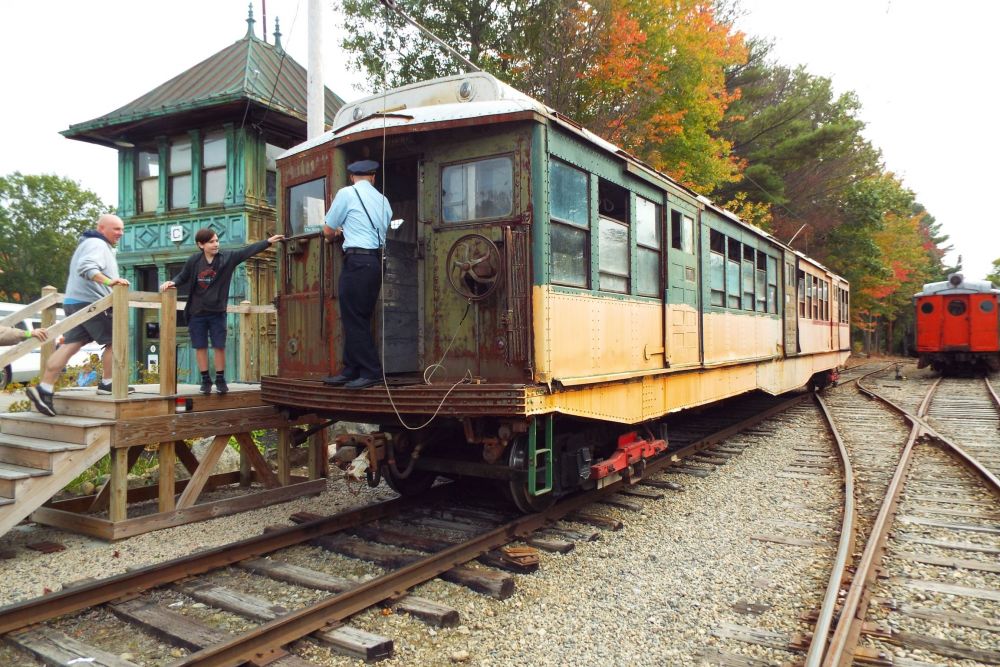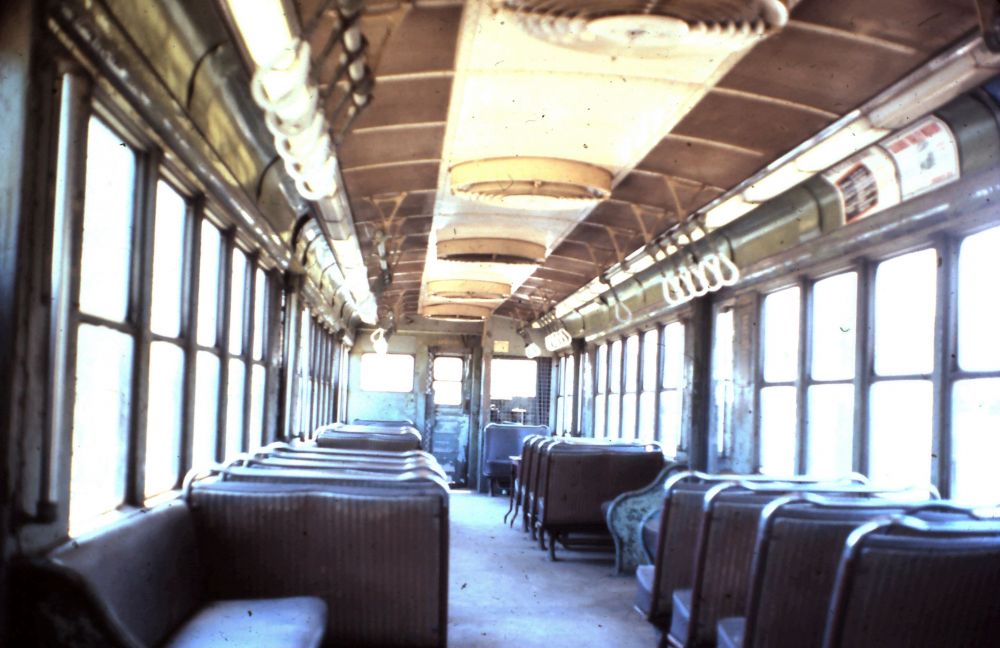
- Builder
- Osgood Bradley Car Co.
- Description
- #4 Cambridge-Dorchester
- Secondary Use
- None
- Type
- Rapid Transit Cars
- Year
- 1927
- Retired from Service
- 1970
- Acquired by the Museum
- 1970
- Fund
- 556
- Sponsor/Manager
- None
Metropolitan Transit Authority 0719
From Boston, Massachusetts
History
After the Boston Elevated Railway (BERy) opened its first rapid transit line in 1901 (the “Main Line Elevated,” later named the “Orange Line”), The BERy opened a second rapid transit line in 1912. This line linked Harvard station in Cambridge with downtown Boston. It later extended south to the Dorchester neighborhood. This became known as the “Cambridge-Dorchester” line. The BERy equipped the Cambridge-Dorchester line with 95 cars, built in three batches between 1911 and 1919. At 69 feet long, these cars were the largest rapid transit cars ever built up until 1962. Thus, they were too large to operate on the Main Line Elevated or on the East Boston rapid transit line which opened in 1924. Most of the Cambridge-Dorchester cars had distinctive “fish-belly” side sills. Unlike earlier rapid transit cars, the Cambridge-Dorchester cars did not have end vestibules but had three doors spaced evenly along each side of the car. In 1927-28, the BERy extended the Cambridge-Dorchester line farther south to the Ashmont station. To handle this expansion, the BERy acquired another 60 cars from Osgood Bradley, Nos. 0695 – 0754. (In Boston, rapid transit car numbers all started with zero to distinguish them from surface streetcars.) The 1928 cars were termed #4 Cambridge-Dorchester cars, but were almost identical to the 95 older cars. The principal difference was the door arrangement. On the older cars, the doors were designed to slide into pockets in the sides of the car, while, on the No. 4 cars, the doors were arranged to slide on the exterior of the car. This eliminated the accumulation of snow in the door pockets.
The BERy was reorganized as the Metropolitan Transit Authority in 1947. In 1948, the BERy modernized four of the #4 cars, including No. 0719. The modernization included florescent lights, ceiling fans and cushioned transverse seats in place of wood longitudinal seats. This set of four cars was dubbed “The Braintree Train” and was to demonstrate what service would be like on a proposed extension of the line from Ashmont to Quincy and Braintree over the former Old Colony Railroad line. (The Braintree extension eventually opened in 1980, long after all the #4 cars were retired.) In 1963, the MTA acquired a fleet of #5 cars to replace the older Cambridge-Dorchester cars. The MTA retained five of the #4 cars as spares: Nos. 0709, 0719, 0749, 0753 and 0754. In 1964, the MTA became the Massachusetts Bay Transportation Authority. The MBTA adopted a color coding system for its transit lines, with the Cambridge-Dorchester line becoming the “Red Line.” Of the five surviving #4 cars, the MBTA converted all except No. 0719 to work cars.
In 1970, the MBTA sold No. 0719 to Seashore for $1. The museum brought the car to Maine by rail on its own wheels. This required replacing the couplers with special, adaptor couplers. The museum quickly added a trolley pole and made repairs. Seashore has repainted the car Pullman green and has operated No. 0719 for some annual meetings and members days.
In 1988-89, Seashore acquired the other four surviving #4 Cambridge-Dorchester cars – Nos. 0709, 0749, 0753 and 0754 which the MBTA had used in work service. The museum accessioned No. 0753 and kept the other three for storage space and for parts.
Technical Information
- Seats: 76
- Control: ALF (CJ-129)
- Brakes: AMLE
- Compressor: DH-25
Trucks
- Number: 2
- Manufacturer: Brill
- Model: 27MCB2/3
Motor
- Number: 2
- Manufacturer: Westinghouse
- Model: 577P1
Weight and Dimensions
- Length: 69’ 3.00"
- Width: 9’ 6.00"
- Height: 12’ 7.00"
- Weight: 85054 lbs.
Additional Images

Kenyon F. Karl on 10/17/17

Kenyon F. Karl on 10/17/17

Paul Kehoe in May 1971

Paul Kehoe in October of 1971
© 1998 - 2025 New England Electric Railway Historical Society. All Rights Reserved.